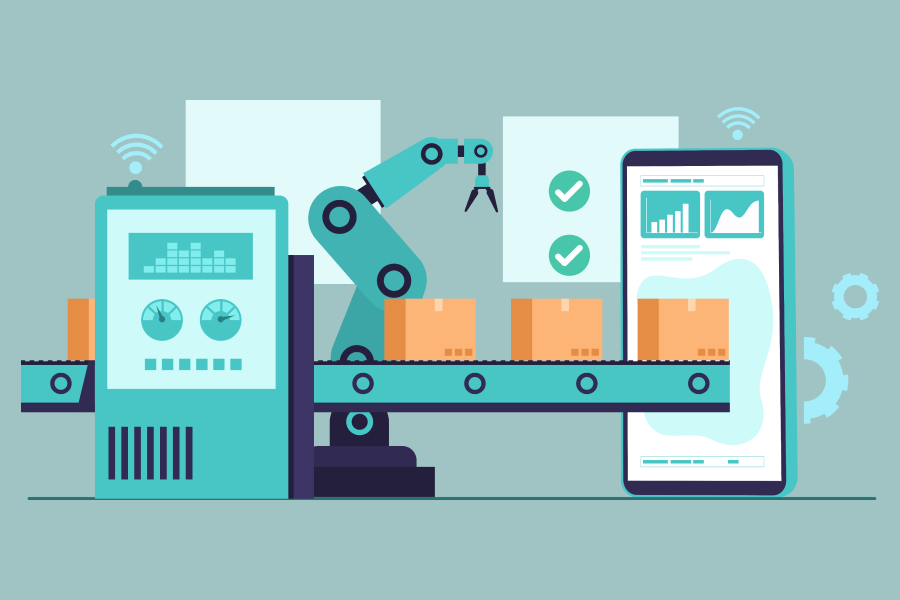Vaccination drives are carried out by the government. officials in many countries, and there are specific procedures for such executions. In a country like India, where technological progress was slow until two decades back, large-scale vaccination programs are done using age–old manual methods. Post-independence, India has undergone several vaccination programs for safeguarding the population from virus-borne ailments and serious disorders like polio, malaria, dengue etc.
The Polio campaign was done in India by using door-to-door coverage and deploying manual methods for registration at large. In 2014, the govt. declared India polio-free, and a large part was done without using much technology. While the incorporation of IT in the healthcare sector has seeped in over the last two decades, its use in vaccination programs was quite limited. That is all set to change with the Covid-19 vaccination program, which is in progress.
Why relying on a Health IT system is necessary for Covid-19 vaccination
The vaccination for Covid-19 pandemic, which is in a raging form in India, is in progress. So far, only a small percentage of the Indian population has been vaccinated properly. This vaccination drive is different from the others carried out in the country by all means. As the virus keeps on evolving and infection patterns keep changing, the medical community is on its toes trying to find a way out.
There are several reasons to deploy a well-developed Health IT system to expedite and execute vaccination for Covid-19:
- The very contagious nature of the virus makes minimizing unnecessary contact a priority. Unlike Polio vaccination, this is a drive that cannot be executed by visiting locations by the government. staff. That only enhances the risks of cross-contamination. Instead, the government. has thrown open an online registration process for fast-tracking the vaccination drive, pan-country. Relying on technology keeps things better both for medical staff and the recipients.
- Nationwide, a chaotic situation is prevailing regarding the vaccination. The misconception and fear among the public about the vaccines, partly fuelled by rumors spread online, has slowed down the vaccination drive to an extent. Using Health IT systems can be helpful in dispelling fear and chaos. The registration process, when done through a dedicated app or site, helps minimize woes and conflicts.
- Deploying a well-developed IT setup is also necessary for keeping track of the covered population and those yet to be covered. The staff involved in the vaccination drive can figure out regions where the drive has to be intensified by analyzing data through software.
- The Covid-19 vaccination program is turning out to be much more large-scale than it was originally planned to be. In the 1st stage, only senior citizens were meant to be covered under it. Later, it was expanded to include those above 45 years. Now, the govt. is readying to vaccinate everyone above 18 years. In a huge country like India, executing this will be a herculean task. Using a well-designed Health IT system will help keep things organized and streamlined.
How using IT can aid in managing nuances of COVID-19 vaccination programs.
A country-wide vaccination drive takes a long time to complete. When a pandemic is raging in the background, keeping things organized becomes even more tedious. Health IT deployment can be very helpful in the proper execution of the mass vaccination. The stakeholders, including the physicians, patients, vaccination administrators and govt. officials, all stand to gain from it.
- Effective tracking of vaccines– The vaccines for Covid-19, whether manufactured indigenously or imported from another country, need to be stored properly. Proper Tracking technologies are necessary to ensure the vaccines are kept and transported under ideal conditions.
- Locating vaccine providers– Those who want to be vaccinated on a priority basis, especially the elderly persons, need an app or web-based vaccine provider tracking mechanism. They can find out where in their regions vaccines are being given, and the timing too.
- Scheduling vaccination– For scheduling vaccination, using a web portal and app comes in handy. Interested candidates can register for vaccination and pick a suitable time for getting the dosage. They also receive confirmation for the booking through such apps and web portals.
- Vaccination certificate- After getting vaccinated properly, containing a digital copy is simple when an app or web portal is used.
- Data reporting and analytics– The public health administrators can make use of the data generated by health IT systems used for vaccination. This can be utilized later for research purposes.
Importance of HL7 Integration
Typically, the history of vaccination data is not kept by any record-keeping agency. When the pandemic is over, the vaccination records can be obtained by using specially developed Health IT systems if healthcare data standards are used. This can be achieved by deploying HL7 FHIR. For such gargantuan vaccination programs, Immunization Information systems are used, and the data can later be shared with EMR systems.
It is necessary to make use of USCDI data standards so that vaccination records can be stored for future access.
Platforms used for immunization digitalization
A number of technology vendors have come forward to facilitate vaccination delivery workflows. They have created vaccine management platforms useful for managing nuances of vaccination. Such a centralized vaccine management setup offers real-time access to vaccine-related data. It also allows scheduling and checking for eligibility.
These vaccine management platforms are useful for public health organizations, vaccine recipients and Healthcare providers. It remains to be seen how useful they prove to be for the ground-level healthcare workers, who are already overburdened with tasks.
How to make the digital vaccine management platforms truly useful
It is necessary to understand that the doctors, healthcare staff and staff involved in the Covid-19 vaccination program are very stressed. They have been working incessantly since the beginning of the pandemic in the country. So, steps have to be taken to make the digital vaccine management platforms suitable for their needs.
- The applications should have an intuitive and fluid interface. Not all medical staff are technology savvy, and the same can be said about a large section of vaccine recipients. It should be easy to navigate and use overall.
- Given the diverse demographics of India, the apps should be made multilingual.
- The applications have to be compatible with various OS and platforms. People who will access these apps will be using different devices and browsers, after all.
Conclusion
It is likely that such digital vaccine management platforms may develop some glitches –at least in the early stages. The staff using the applications should be well trained so that they can address such snags without much delay.

 Web and Full Stack
Web and Full Stack CMS and Frameworks
CMS and Frameworks Online Marketing
Online Marketing Cloud Services
Cloud Services ECommerce
ECommerce Mobile
Mobile



